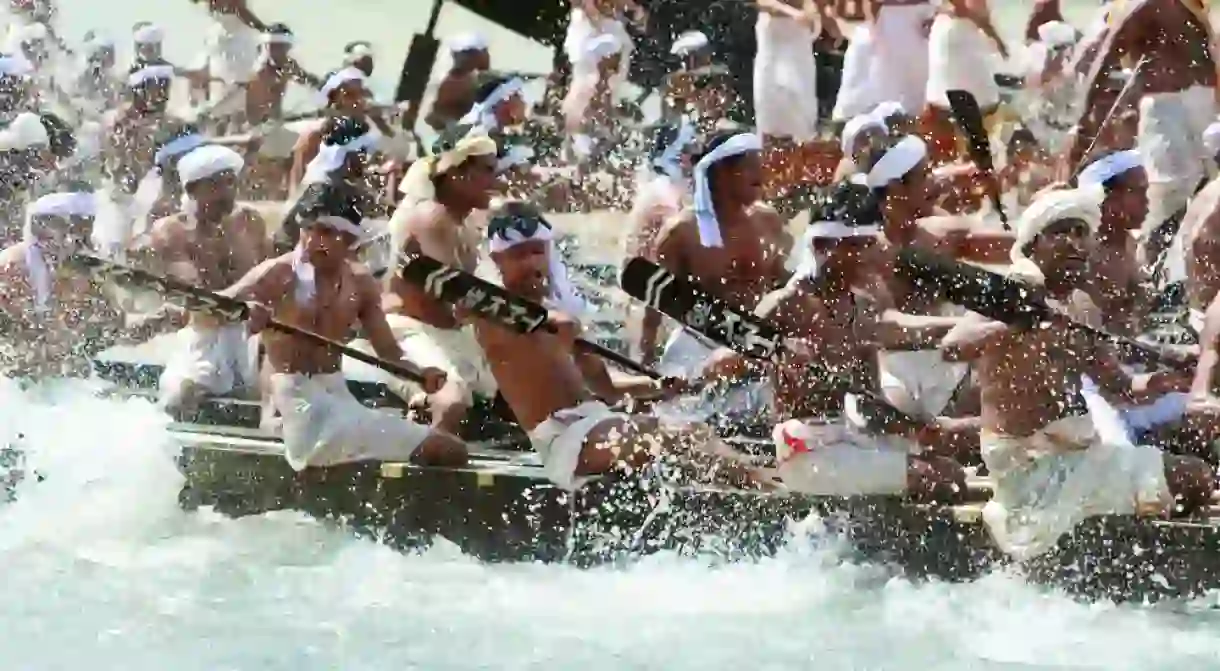This 400-Year-Old Tradition of Snake Boat Racing in India is Truly Unique

A tradition so majestic and heavy with history and mythology attached to it, snake boat racing in Kerala is a very different sight from the viewing tents these days! Lakhs of people at a time witness the resplendent event, photographers clicking non-stop and drones flying all over the backwaters to capture every oscillation of the raging boat men. The 400-year-old tradition has been nurtured in the coastal state with pomp and celebration.
It all started when King Devanarayana of Chembakassery appointed a highly-skilled and famous carpenter of his time to build a boat that could help him win wars against his rival, King Kayamkulam, about 400 years ago. The two armies often battled in the backwaters of Kerala and after King Devanarayana was badly defeated because of a weak navy, he couldn’t rest until he had a way to get back. The carpenter did his job well and built a boat that could take 100 men together, move fast and easily station between the bushes at the banks without being noticed. King Devanarayana won the next war and the snake-like canoe became famous.

But, the magnificent boats are not used for war today. There are different designs built for different purposes. Irrutukuthy, Vaipu and Churulan are a smaller boat mostly used to transport people or vegetables and grains across banks. Chundan is the biggest of all and most famous for its snake-tail kind stern. There is one race event dedicated to women rowers too!

Chundan boat race conducted in Alappuzha is the main and one of the most-watched sports in the southern part of India! The Nehru Trophy is awarded to the winning team after they defeat almost 15-20 other boats in a four-track race. Each boat has about 110 people, all doing their jobs in perfect rhythm to take the boat ahead as fast as they can. To keep the zeal and motivation high there are songs sung by men in the boat. At least 25 in each boat are only there to sing songs that match the tempo of the oarsmen. Vanchipattu or songs of the boatmen are sung with traditional percussion instruments. In other parts of Kerala, like Aranmula, Kumarakom and Kottapuram, oarsmen do not race their boats, but put on a good show for the onlookers. They call their boats palliyodam, or Lord Krishna’s yacht.

The annual boat race, held during Kerala’s harvest festival Onam (between August and September), is so highly regarded that the oarsmen’s diet and nutrition is taken care of by the village they belong to. On the big day of the event, after a winning boat crosses the finish line, all the oarsmen are fed a feast called Vallasadhya. It is tradition that the oarsmen sing rhythmic songs while eating!


The tradition hasn’t lost its charm one bit even after 400 years. From young children to the elders, everyone comes together to celebrate Onam and watch the races in the backwaters.













